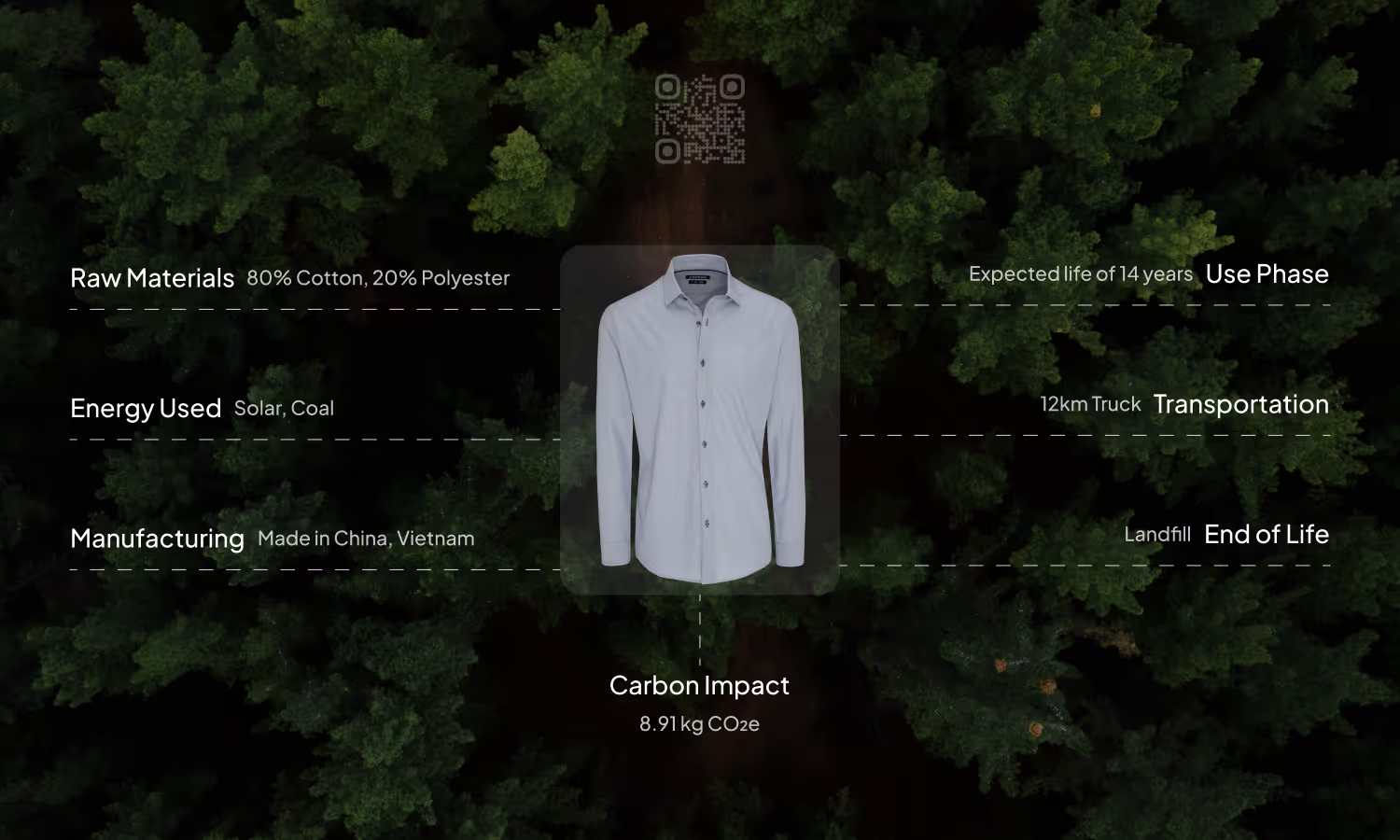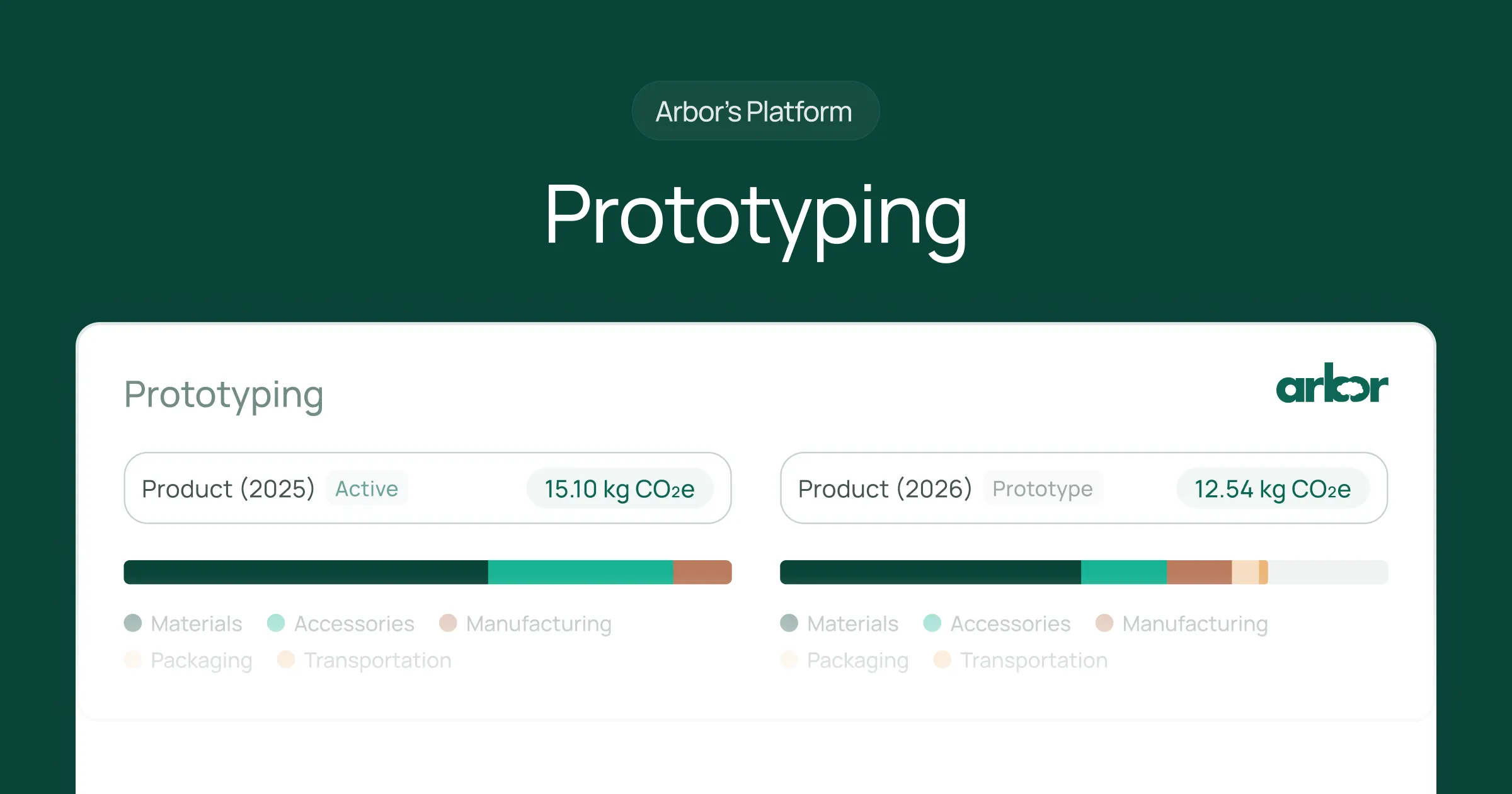The introduction of the Digital Product Passport (DPP) presents an opportunity to establish a comprehensive system capable of storing and disseminating information encompassing every stage of a product's life cycle. This system would allow industry stakeholders, businesses, public authorities, and consumers to know exactly what the environmental impact is of each and every material employed in their products.
Understanding the Framework Behind the Digital Product Passport
In 2020, the European Commission (EC) endorsed a new Circular Economy Action Plan (CEAP), showing the need for circular economy initiatives to encompass the entirety of a product's life cycle, spanning from the inception of basic materials to the ultimate disposal at the end-of-life stage. As an extension of the Ecodesign Directive governing energy-related products, the Circular Economy Package, initially released in March 2022, incorporates a proposal for the Ecodesign for Sustainable Products Regulation (ESPR). This regulation seeks to augment the existing framework by promoting ecologically conscious product design principles.
The EU's Circular Economy Action Plan (CEAP) highlights the projected doubling of global consumption of materials like biomass, fossil fuels, metals, and minerals over the next 40 years, alongside a 70% increase in annual global waste generation by 2050. The current linear model of "take-make-use-dispose" fails to incentivize producers to prioritize circularity, resulting in products that are not easily repairable, reusable, or recyclable, and are often designed for single-use purposes.
The environmental consequences are dire, with basic materials (commodities) accounting for approximately 16% of net annual greenhouse gas (GHG) emissions in the EU and 20% globally. Thus, expediting the transition towards climate-neutral materials and products is imperative. The EU must create substantial demand for domestically produced circular and climate-neutral materials to facilitate industrial decarbonization. This will provide the economic viability for companies to transform their production and value chains fundamentally.
Digital Product Passports (DPPs) are expected to play a pivotal role in enabling innovative approaches by facilitating the exchange of sustainability information, such as carbon footprints and recyclability across value chains. DPPs have the potential to support circular economy strategies, carbon reduction initiatives, new market development, business model innovations, and social compliance reporting. However, the establishment of a universally applicable DPP approach is still pending.
In line with the EU's proposed Ecodesign for Sustainable Products Regulation (ESPR), the Commission aims to develop a generic framework for DPPs applicable to most materials and products. Sector-specific adaptations will complement the basic design, tailoring it to the unique characteristics of different product groups. Interoperability with other industry frameworks is crucial as products and materials traverse multiple industries and applications throughout their lifecycle.

What are Digital Product Passports (DPP)?
The EC defines a 'product passport' as a product-specific dataset that can be electronically accessed via a data carrier to facilitate the electronic registration, processing, and sharing of product-related information among supply chain entities, authorities, and consumers. The DPP serves as a means to provide comprehensive details regarding the origin, composition, repairability, and disassembly options of a product. Additionally, it includes information on the use phase of a product, and recyclability or appropriate end-of-life disposal methods for various components. This information plays a pivotal role in advancing circular economy strategies, such as predictive maintenance, repair, remanufacturing, refurbishment, and recycling. Moreover, it enhances consumer awareness and empowers stakeholders by providing valuable insights into the sustainability attributes of products and materials.
Core Benefits to All Stakeholders in the Value Chain:
Enhanced Access to Product Sustainability Information:
The DPP enables businesses and policymakers to access reliable and comparable information regarding the sustainability aspects of products. This information assists in addressing product liability challenges and supports decision-making processes related to sustainability.
Empowering Consumers with Informed Choices:
Consumers gain access to valuable information through the DPP, empowering them to make more informed and eco-friendly purchasing decisions. By providing transparency and clarity, the DPP enables consumers to align their choices with their values and preferences.
Improved Transparency, Traceability, and Consistency:
The DPP promotes transparency and traceability throughout the value chain. Each participant in the value chain can access consistent and reliable information, fostering trust and facilitating more efficient collaborations and transactions.
Catalyst for Innovation and Circular Thinking:
The DPP can act as a catalyst for innovative thinking, particularly in the context of circularity. By providing comprehensive information on product lifecycle and materials, it stimulates new practices and encourages businesses to explore circular economy models and strategies.
Potential for New, Sustainability Focused Business Models:
The DPP has the potential to drive the development of entirely new business models. By offering detailed insights into product sustainability attributes, it opens up opportunities for businesses to differentiate themselves and create value through innovative and environmentally conscientious approaches and services.
Data Sources for Sustainable Investment Decisions:
The DPP generates new data information channels that can support sustainable investment decisions. Investors can leverage the information provided by the DPP to evaluate the environmental performance of companies and make informed investment choices aligned with sustainability objectives.
Enablement of Resource Optimization and Energy Efficiency:
Through comprehensive data on product composition and lifecycle, the DPP enables organizations to implement optimization and efficiency strategies. Businesses can identify opportunities to optimize resource utilization and minimize environmental impacts throughout the product's lifecycle.
Who Needs to Implement a Digital Product Passport?
At present, the European Union is deliberating the inclusion of multiple sectors, namely apparel, batteries, and consumer electronics among others, for the implementation of product passports by the year 2026. This initiative is part of the broader framework of the European Green Deal, excluding only food, feed, and pharmaceutical products. Consequently, enterprises engaged in product sales within the EU market will be obligated to furnish a product passport encompassing the final product as well as its constituent components. While this regulation pertains specifically to the EU, its ramifications will extend globally.
How do you Make a Digital Product Passport for Your Products?
In terms of recommendations from a business perspective, the design and implementation of a Digital Product Passport (DPP) can be categorized into the following principles:
Ensuring Coherence and Consistency:
- All forthcoming EU regulations and initiatives relevant to DPPs should be closely aligned and connected to the proposed approach for the European Sustainable Products Regulation (ESPR) and lessons learned from the EU Battery Passport.
- The digital infrastructure and software used for DPP implementation should strive for interoperability and compatibility with other systems to the greatest extent possible.
- The overall governance of DPP implementation should be managed by the EU, which should establish clear usage guidelines. Additionally, the EU should create an enabling environment through the establishment of common standards, access rights management, and an interoperability framework.
- Existing international initiatives, approaches, and stakeholders involved in product data harmonization and standardization should be leveraged to avoid redundancy and duplication of efforts.
- DPPs should serve as criteria for green public procurement and as a substantiation tool for ecolabels.
- DPPs should facilitate a standardized approach to information sharing in complex supply chains, allowing for the exchange of data such as recycled content and carbon footprints
Embracing Adaptability:
- DPP testing and pilots should commence promptly but on a small and modest scale, following a phased approach that allows for continuous extension and further development to facilitate iterative learning.
- Pilot projects should encompass a diverse range of clearly defined products and sectors, enabling the evaluation of commonalities across different product groups.
- Detailed data included in DPPs should be specific to each product group to ensure reliability and comparability rather than adopting a one-size-fits-all approach.
Transparency and Traceability:
- DPPs should provide sufficient data to consumers, businesses, and investors, enabling them to make more informed purchasing decisions that prioritize sustainability criteria.
- Information requirements for DPPs should be relevant and purposeful, with each piece of information based on a clear scope and concrete user benefits throughout the product life cycle.
- Mandatory product information within DPPs should strike a balance between different levels of data access and data protection needs, ensuring default transparency along the value chain while respecting legitimate confidentiality concerns.
- The operational implementation of DPPs should be entrusted to trusted intermediaries who possess both technical expertise and an understanding of the broader policy objectives of DPPs in support of a circular economy.
Arbor’s Approach to Digital Product Passports
Arbor’s approach to creating an intelligent, dynamic, and useful DPP is built on the principle of collaboration and ensuring that the client’s specific sustainability needs are identified so correlating targets can be met efficiently. To create the DPP the Arbor team works with the client through the following steps:
Business Objectives:
Arbor begins by understanding the business objectives of the client requesting the DPP for their product. This includes identifying the specific goals they want to achieve through the DPP, such as improving their environmental impact, meeting regulatory requirements, or enhancing consumer transparency.
Data Gathering and Collection:
The next step involves gathering relevant data about the product in question. Arbor collaborates with the client to collect information about the materials used, manufacturing processes, energy consumption, transportation, use phase, and end-of-life management. This data collection may involve engaging with various stakeholders across the product's lifecycle, including suppliers, manufacturers, and distributors.
Analyze Any Data Gaps:
Arbor analyzes the collected data to identify any gaps or missing information that could affect the accuracy and completeness of the DPP. This analysis helps in understanding areas where additional data needs to be procured to ensure a comprehensive evaluation of the product's environmental impact.
Suggest Recommendations for Procuring Data:
If there are data gaps identified in the previous step, Arbor works closely with the client to suggest recommendations for procuring the required data. This may involve conducting additional surveys, assessments, or collaborating with relevant partners and suppliers to obtain the missing information.
Supplement with Arbor's Unmatched Secondary Data:
In cases where it is not possible to obtain certain data directly, Arbor supplements the missing information with our secondary data. Arbor has access to a vast database of industry-specific information, accumulated through years of research and data partnerships. This allows us to provide reliable estimates and fill in the data gaps, ensuring a more accurate assessment of the product's life cycle impact.
Overall Life Cycle Assessment (LCA) Calculations:
Arbor employs its proprietary engine and tools to perform a comprehensive Life Cycle Assessment (LCA) of the product. LCA considers the entire product lifecycle, from raw material extraction to disposal, and evaluates the environmental impact associated with each stage. This assessment quantifies factors such as carbon emissions, energy consumption, water usage, and waste generation.
Review for Missing Data, Assumptions, and Limitations:
Before finalizing the DPP, Arbor conducts a thorough review to ensure there are no missing data points, assumptions, or limitations that could impact the accuracy and credibility of the passport. This step involves a comprehensive quality assurance process to address any discrepancies or uncertainties.
Address Missing Data, Assumptions, and Limitations:
If any missing data, assumptions, or limitations are identified during the review process, Arbor takes the necessary steps to address them. This may involve revisiting data sources, revising assumptions, or clearly communicating any limitations in the DPP. The accuracy of the data is showcased through Arbor’s Data Quality Rating. The aim is to provide a complete and reliable document that presents an accurate picture of the product's sustainability performance.
DPP Goes Live:
Once all the necessary revisions and improvements are made, the Digital Product Passport goes live and becomes accessible to stakeholders. Consumers can access the DPP through various channels, such as the client’s website via product pages.
Looking to create a Digital Product Passport (DPP) for your company?
Arbor can help! Request a demo.
Measure your carbon emissions with Arbor
Simple, easy carbon accounting.




.webp)
%20Directive.webp)


.webp)











%20Arbor.avif)





%20Arbor.avif)


.avif)






%20Arbor%20Canada.avif)

.avif)
%20Arbor.avif)
.avif)






_.avif)
.avif)
%20Arbor.avif)




%20Software%20and%20Tools.avif)





.avif)
.avif)




%20EU%20Regulation.avif)












.avif)


%20Arbor.avif)









_%20_%20Carbon%20101.avif)







.avif)

.avif)
.avif)








